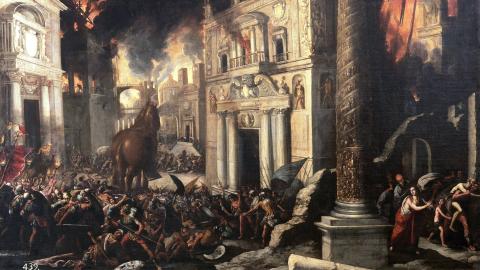In post-revolutionary Russia, the Union of Soviet Socialist Republics (USSR) is established, comprising a confederation of Russia, Belorussia, Ukraine, and the Transcaucasian Federation (divided in 1936 into the Georgian, Azerbaijan, and Armenian republics). Also known as the Soviet Union, the new communist state was the successor to the Russian Empire and the first country in the world to be based on Marxist socialism. On 1 February 1924, the USSR was recognised by the British Empire.
During the Russian Revolution of 1917 and subsequent three-year Russian Civil War, the Bolshevik Party under Vladimir Lenin dominated the Soviet forces, a coalition of workers' and soldiers' committees that called for the establishment of a socialist state in the former Russian Empire. In the USSR, all levels of government were controlled by the Communist Party, and the party's politburo, with its increasingly powerful general secretary, effectively ruled the country.
Soviet industry was owned and managed by the state, and agricultural land was divided into state-run collective farms.In the decades after it was established, the Russian-dominated Soviet Union grew into one of the world's most powerful and influential states and eventually encompassed 15 republics – Russia, Ukraine, Georgia, Belorussia, Uzbekistan, Armenia, Azerbaijan, Kazakhstan, Kyrgyzstan, Moldova, Turkmenistan, Tajikistan, Latvia, Lithuania, and Estonia. The USSR would go on to engage in almost seven decades of Cold War with Western, capitalist nations, where both sides would attempt to influence the politics and economies of various countries around the world. In 1991, the Soviet Union was dissolved following the collapse of its communist government.






